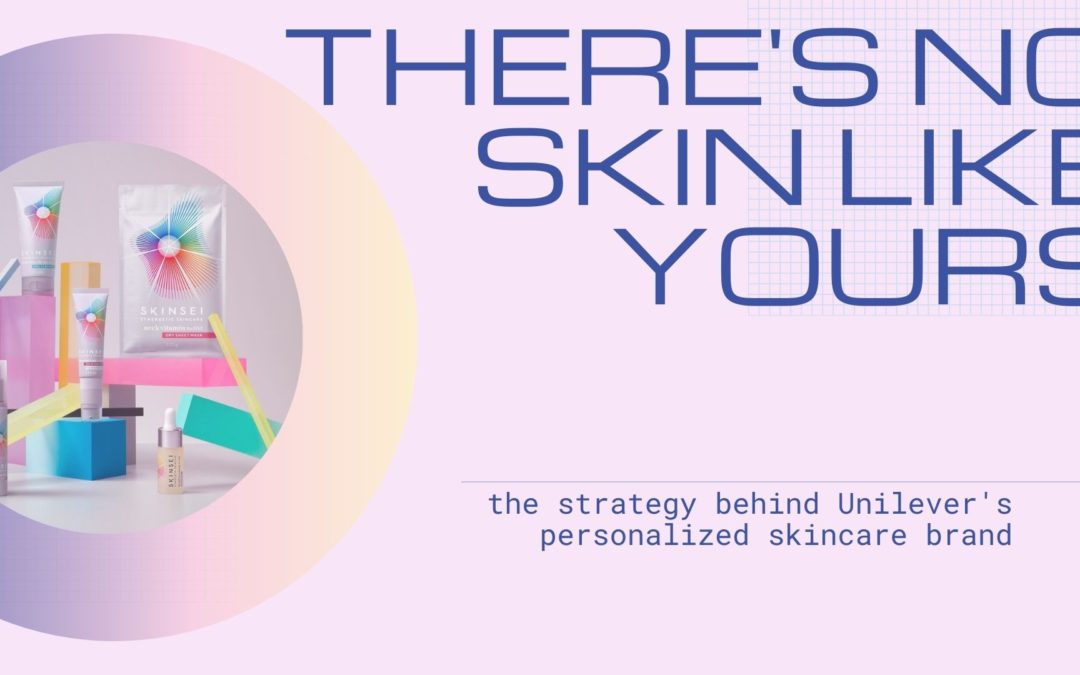Skinsei is building the future of ecommerce.
At least, that’s what CPG giant Unilever believes. Unilever’s CEO Allen Jope described Skinsei’s business model: “[Skinsei] is using the latest thinking in business models – direct to consumer, diagnostic driven, subscription, completely personalized.”
Brands like Winc (wine), Ipsy (beauty) and Scentbird (fragrance) all offer a Direct To Consumer subscription offering based around a diagnostic.
So how is Skinsei different than these offerings?
The answer lies in the end-to-end personalized experience.
There are several interesting strategies that make Skinsei an interesting case study of what ecommerce brands of the future may do:
- Start customers with a diagnostic quiz
- Evaluate personal needs based on quiz results
- Offer personalized product recommendations
- Provide educational content
- Sell the routine as a subscription
The subscription model lends itself to more predictable (and recurring) revenue, higher customer satisfaction, and better profit margins.
Even though Unilver is a public company with a $160 billion market cap, there are applicable lessons for brands of all sizes by studying Skinsei’s approach to building a personalized ecommerce brand.
Skinsei: The Origin Story
In 2017, Valentina Ciobanu realized that she needed a skin care product tailored to her specific needs. She realized that existing products on the market did not account for differences in skin, wellness, lifestyle and environment.
Ciobanu, who was global brand Vice President at Unilever, pitched her idea to Unilver CEO Alan Jope while sitting in a taxi in Manila. She put together a formal presentation for what would become Skinsei.
“I started this project [in part] because I felt the skin-care industry took a view that was too narrow of what [skin] needs, ignoring these links between our skin and wellness, lifestyle and environment,” she told WWD. “My best friend and I are the same age, but we live in different climates and [have different diets and exercise regimens] and our skin is not the same.”
In January 2019, Skinsei launched within the Unilever brand.
The mission was to provide skincare products that take into account the holistic needs, such as nutrition, sleep, exercise and environment have on skin.
The cornerstone of Skinsei’s customer experience revolves around the diagnostic quiz, which is the very first step that customers take.
How It Works: Skinsei’s Diagnostic Quiz
The Skinsei quiz is 28 questions, and takes 5 minutes to complete.
5 minutes can be a significant ask of a shopper, particularly as it is a mandatory first step to becoming a customer.
So how does Skinsei incentivize shoppers to commit to taking and completing the diagnostic quiz?
By creating an immediate exchange of value.
This exchange is the foundation for forging a relationship between the brand and customer. It is the first principle of Robert Cialdini’s Influence: Reciprocity. It simply states that people are compelled to give back after they have received something.
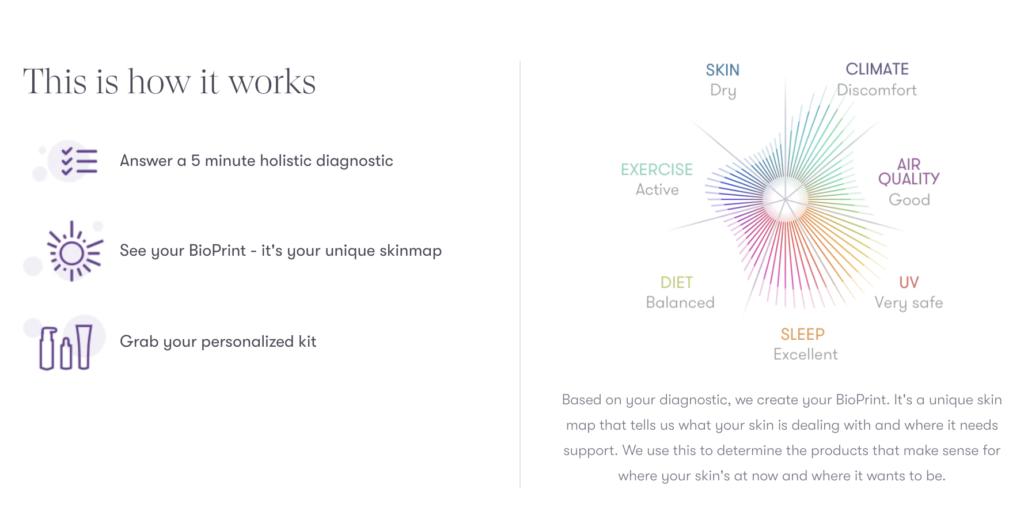
In this case, the exchange of value goes something like this:
- Shopper commits time to answer diagnostic quiz
- Skinsei gives analysis and recommendation on skin
- Shopper shares contact information to open lines of communication
- Skinsei offers solution to shopper’s skincare needs
Note that this exchange is educational, engaging, and is an immediate exchange of value.
The exchange of value must move in tandem – as the ask of the customer increases, so must the “prize” that the customer receives at the end.
Skinsei lays out this exchange at the start of the quiz, and what I can expect:
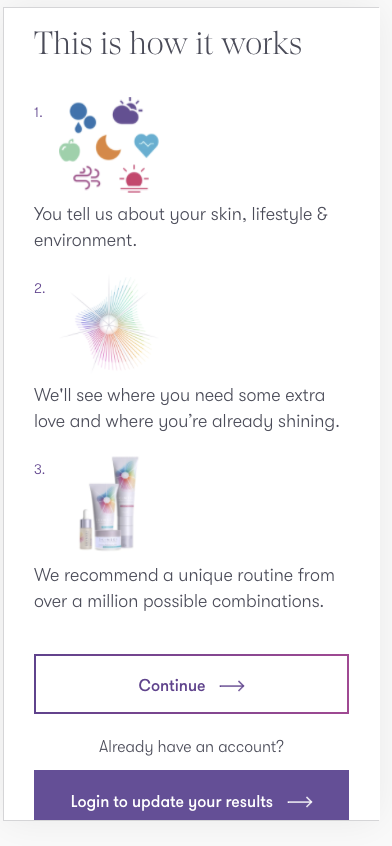
Share a bit about skin, lifestyle and environment; learn where I’m doing well and not doing well; receive a customized plan from over a million different combinations.
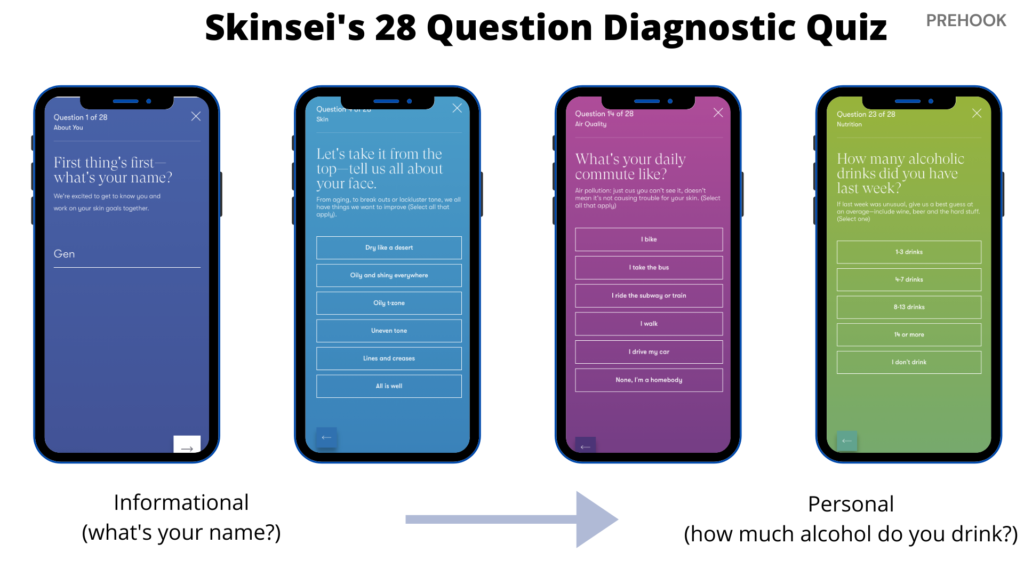
The 28 questions are broken up into 7 sections to achieve the holistic diagnostic: Skin, climate, air quality, UV, sleep, diet, and exercise.
Each question is designed to home in on a necessary piece of the puzzle to identify which products are most appropriate based on skin needs.
After completing the quiz questions, I can see my diagnostic report:
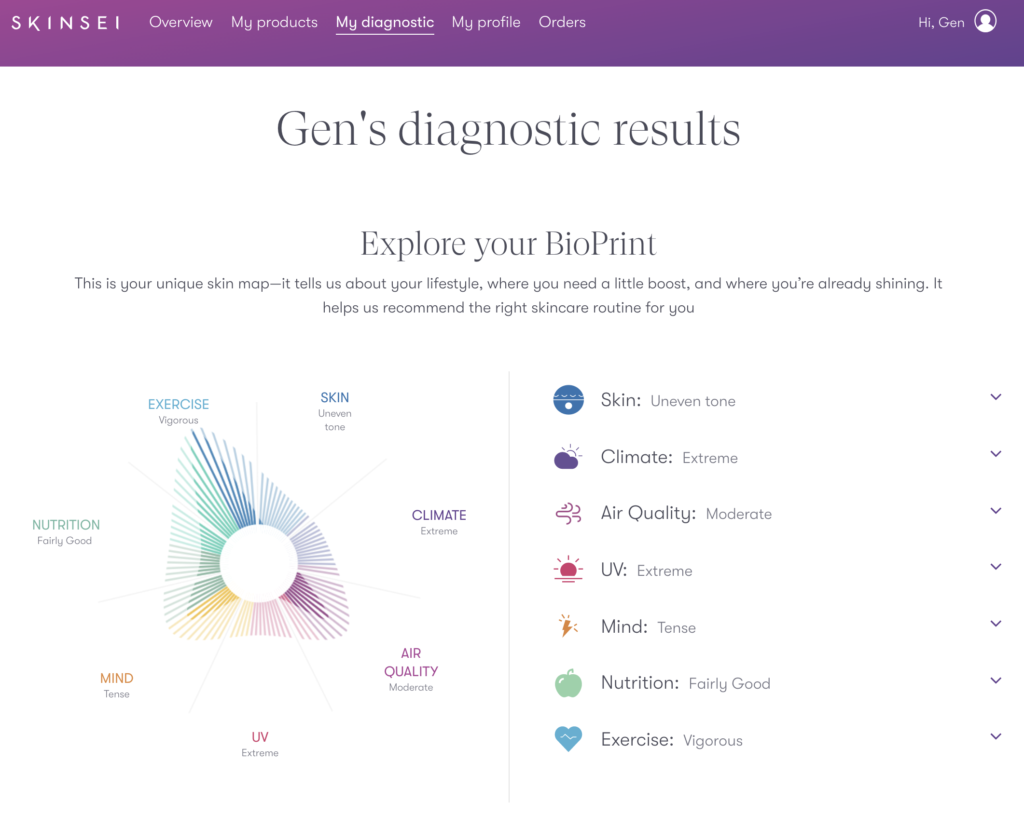
In order to see the products that I need in order to address my skincare needs, I need to enter my email address:
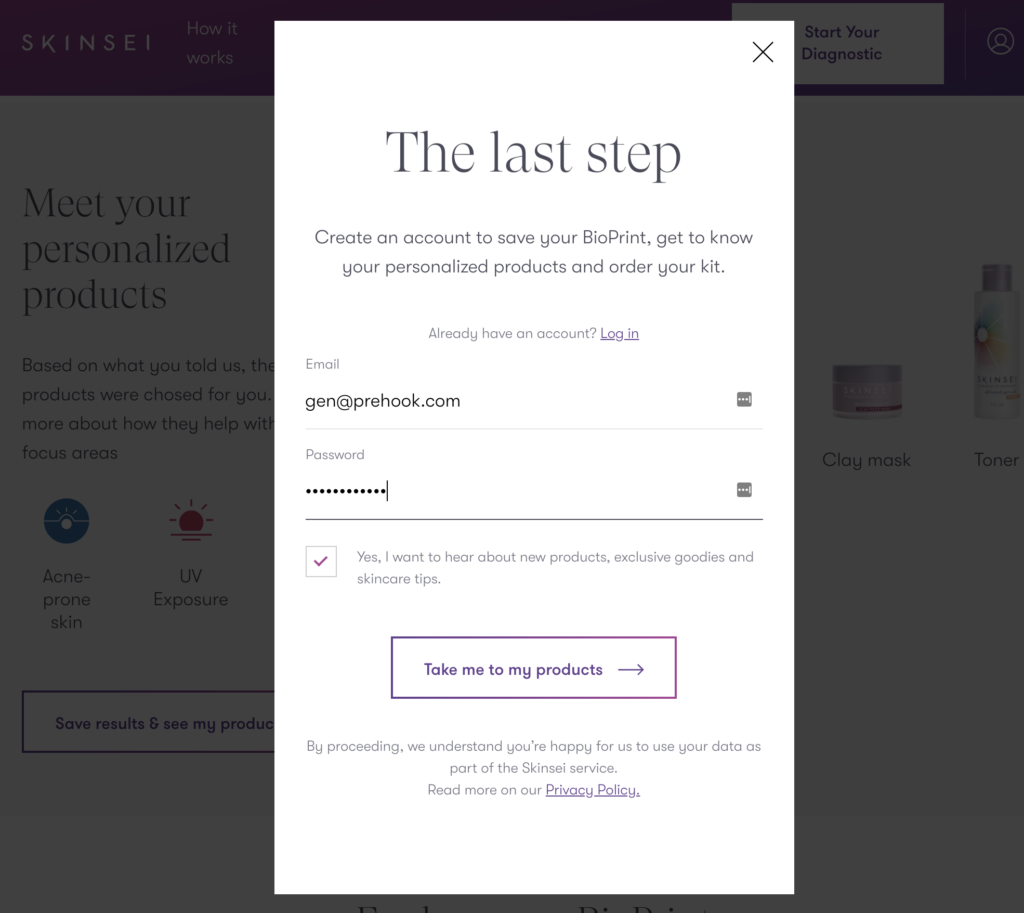
And then I am brought to the product recommendations page.

Opting in is a huge milestone in the customer journey—I have provided a significant amount of personal information, including my contact information.
At this point, if I don’t commit to purchasing a package, Skinsei has gathered significant data with which to target me with personalized messages.
For example, take a look at my diagnostic results:
The diagnostic states that I may need help with dry, acne-prone skin, UV exposure, and the hot and humid climate of Austin.
This diagnostic results page is effective for several reasons:
- Legitimately personalized – using my name, location, and information that I shared in the quiz reaffirms that this is a diagnostic based on the answers that I shared. It pulls in real time data (like Austin’s weather forecast for today) to legitimate the authenticity.
- Educational – Like most customers, I don’t know a lot about dermatology and how lifestyle and environment impact my skin, so the page offers helpful insights in this regard.
- Identifies the problem – the section “What we’ll focus on” is a gentle way of suggesting where my skin needs help. Identifying the problem is the first step in moving me towards the solution I need, and signing up as a customer.
- Presents a solution – The personalized products page offers an easy solution to addressing my skincare needs. A short snippet of information explains why I the product is relevant to me, and the problem that it is addressing (ie UV exposure).
To be clear, customers don’t receive customized products (in the same way that Prose makes shampoo formulas specifically for your profile).
Instead, the personalization comes from the different combinations of the products that customers are prescribed. Skinsei notes that there are over a million possible combinations that work for each individual unique skin type and conditions.
Why Unilever Loves This Business Model
Skinsei got the greenlight as an incubated Unilever company because it was a low-stakes bet with promising economic outcomes.
Specifically, the Skinsei business model offers predictable revenue, lower delivery costs and valuable data about customers.
Better Revenues – Subscription revenue is the holy grail of ecommerce. It offers a clearer path to higher lifetime value. Revenues are more predictable and stable with recurring subscriptions, and avoid the reliance on one-off sales which can fluctuate more.
Better Unit Economics: As a Direct-To-Consumer play, Skinsei avoids retail fees and has more control of pricing, promotions, and merchandising. Compare this to other Unilever brands like Dove, who have to negotiate pricing with retailers, who are also selling competing products alongside Dove. The DTC model means that Skinsei owns the entire customer journey, and the customer experience.
Improved Shipping Margins: Skinsei delivers products on a specific date, but do not need to ship products on overnight or two day shipping, which is more expensive. Thus, Skinsei can control logistics and distribution costs more easily with recurring scheduled orders as opposed to one-off orders
Better Customer Insights: Skinsei has better customer insights, because it has direct access to customer data: all data from the diagnostic quiz, contact information, transaction history, engagement with the brand and product preferences. This is not as easy outside of the DTC model.
Niche eCommerce Strategy
The US beauty market has become fragmented. There are an increasing number of beauty brands and products targeted to niche audiences, like Rihanna’s Fenty Beauty (which offers 50 shades of foundation). There is an increased demand for targeted and niche beauty brands, and this is the space that Skinsei is playing in.
Unilever itself has unveiled a number of niche brands with unique positioning: The Right To Shower (socially-conscious body care), Love Beauty and Planet (beauty and skin care), and ApotheCare Essentials (facial skin care).
Moreover, Unilever has experience in subscription consumer packaged goods, with Dollar Shave Club’s subscription razor service, which has expanded into cologne, beard oil, and toothpaste.
And skincare makes up the largest portion of the global cosmetics industry, making up 40% in 2019.
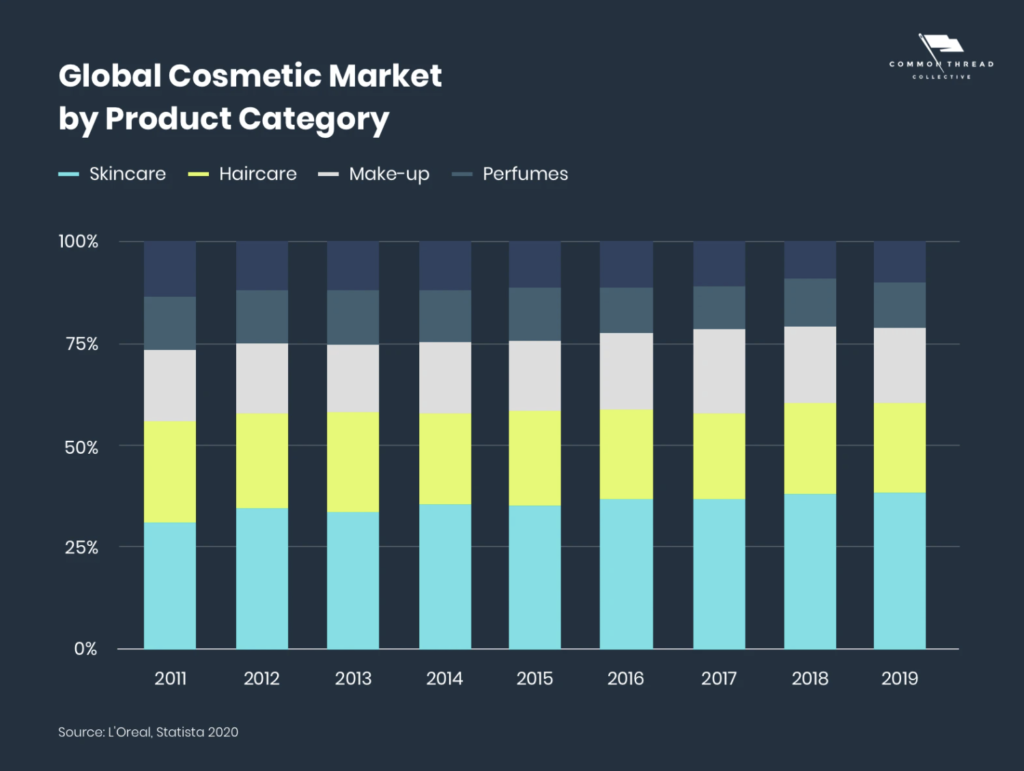
source: Common Thread Collective
Speed To Market
Skinsei was launched as a Minimum Viable Product. Jope explicitly stated that it was a learning experiment, and the company and product would develop based on feedback.
Using marketing channels like social media (both paid and organic) and influencer campaigns, the speed to getting the product to the right audience can be much faster. And the learning cycles also accelerated.
On Subscription eCommerce & The Challenges of Replenishment Subscription
eCommerce subscriptions fall into three categories, according to McKinsey:
Replenishment – to save time or money. Skinsei falls into this category.
Curation – to be surprised by product variety
Access – exclusive access
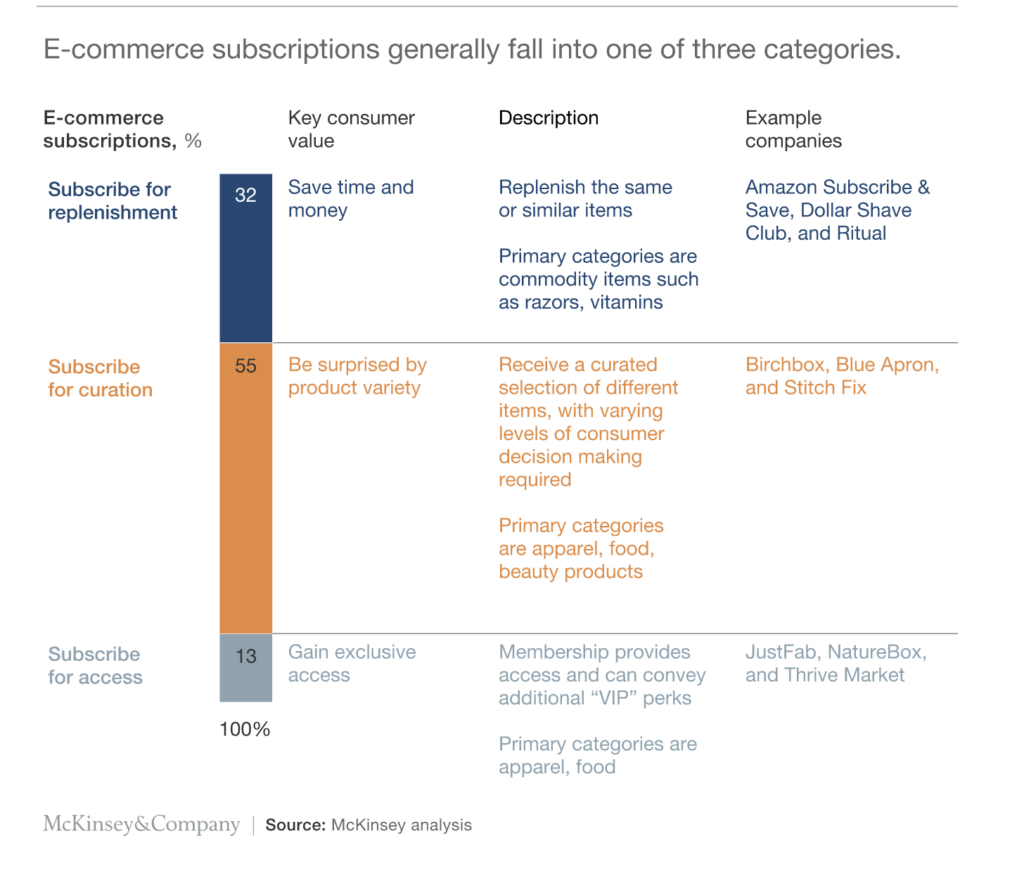
source: McKinsey
Signing up for a subscription is a mental hurdle that has a lower conversion than one-off purchases. However, when customers do sign up for subscriptions, there is an expected benefit of the subscription, which is reduced cost or increased personalization.
When signing up for replenishment subscription ecommerce products like Skinsei, the reasons are convenience (24 percent), value for the money (23 percent) and personalized experiences (22 percent).
If these expectations are not met—due to poor product experience, customer experience or lack of perceived value—customers churn out quickly.
For replenishment subscriptions, the main reasons for churning out are “dissatisfied with the product/experience” and “Prefer to buy when needed”.
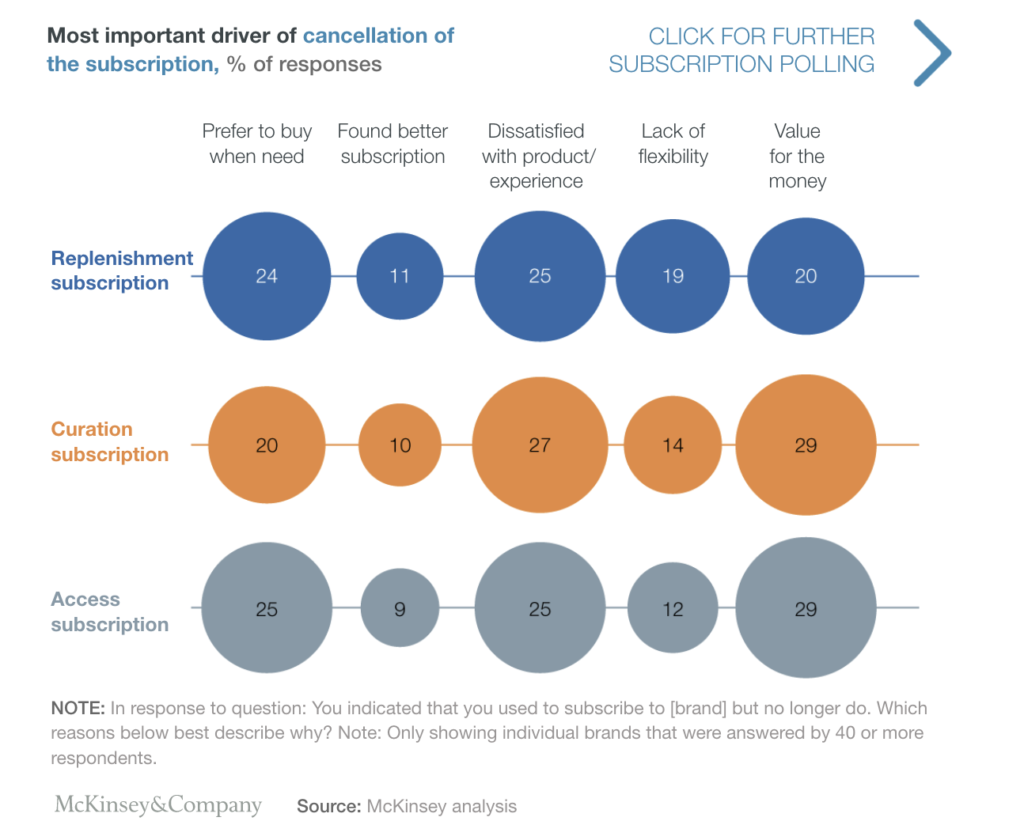
source: McKinsey
How can Skinsei ensure that customers have the ideal customer experience?
The answer is education: providing resources to help customers understand the product itself, why they are using each product, and to keep customers actually using the product.
Education To Drive Customer Retention
One of the main challenges with subscription ecommerce is churn.
Remember, one of the main reasons for customers churning out is that providing the right amount of product – consumers do not want to have products accumulate unused. So by driving the proper product usage, customers will deplete the skincare product and welcome the replenishment order.
This means happier customers, and less churn.
In fact, “proactively providing information on how to avoid problems or get more out of your product” creates a 32% average lift to repurchase or recommend.”
This is where the educational element is interesting.
I have not seen any of these educational tips myself, but Jope in his launch hype of Skinsei promised tips and expert advice alongside the products to help users better understand their skin care needs and regimen.
The product can not achieve its promised results if it’s not used properly, so the education is invaluable here.
Moreover, if the customer does not pick up the daily routine, then the product goes unused and the customer eventually churns as a stockpile of product builds up.
So product education that helps users achieve their end goals, and encourages users to get through their product (and purchase more) is brilliant.
Skinsei is equipped with more than enough customer data to create compelling marketing campaigns tailored to my specific needs.
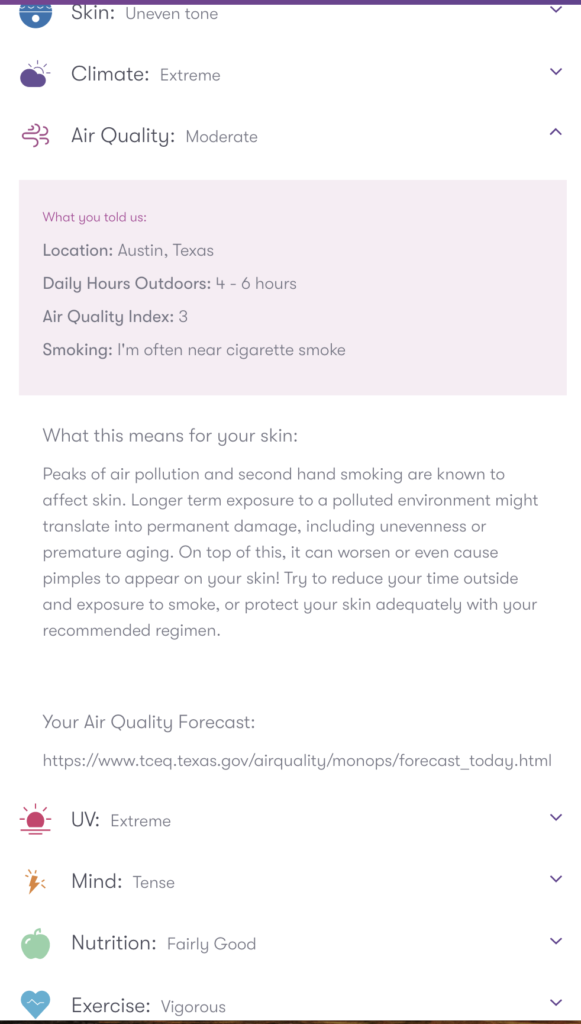
In Closing
It is still too early to determine the success of Skinsei.
However, the business model of personalized products built around a diagnostic quiz and supported by product education is one that I think will be adopted more widely.
In addition to the recurring revenue of a subscription business, the company is amassing a database of highly personal data through its quiz.
This “Zero-Party Data” is a gold mine for a multi-national CPG company like Unilever. They can use this to inform the product development of their various other beauty brands, and piece together the challenges that users are experiencing.

